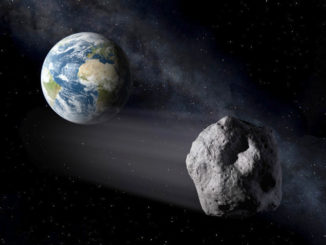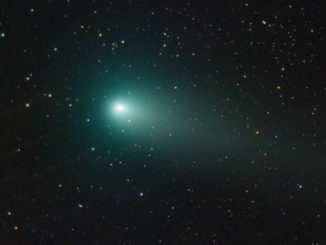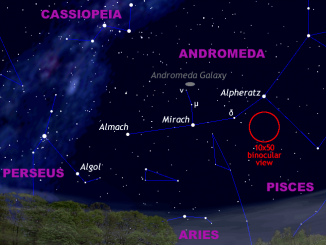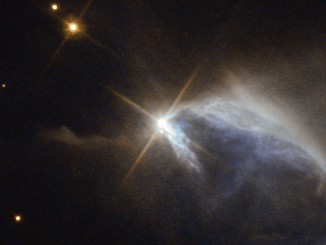
Cassiopeia


Hunting for colourful double and triple stars in the constellation of Cassiopeia
The instantly recognisable five-star M-shaped pattern of stars representing the constellation Cassiopeia (pronounced kas-ee-uh-pee-uh) lies almost overhead in the early evening as seen from the British Isles over the festive period. Cassiopeia is rich in wonderful double and multiple stars, so here’s our guide to some of the best for typical backyard telescopes.


See bright Comet 21P’s close brush with conspicuous Capella
If you’ve never seen a comet, there’s currently a bright example visible in the late evening about to make a close approach to the 6th brightest star in the night sky on the UK night of 2–3 September. We show you how to find Comet 21P/Giacobini-Zinner around the time it passes within a degree of prominent star Capella.

Halloween near-Earth asteroid 2003 YT1 has Polaris encounter on 2 November
At 9:24am GMT on 31 October 2016, near-Earth asteroid 164121 (2003 YT1) will safely fly by at a distance of 3.2 million miles (5.2 million kilometres), or 13.5 times the distance of the Moon. Furthermore, this 1.1-mile-(1.7-kilometre)-wide Apollo asteroid also passes very close to Polaris early on 2 November, creating a rare astrophotographic and observing opportunity.

Hubble sees a ‘nuclear ring’ of star formation in galactic merger
While NGC 278 may look serene, it is anything but. The galaxy is currently undergoing an immense burst of star formation as revealed in this NASA/ESA Hubble Space Telescope image. However, NGC 278’s star formation is somewhat unusual: why is it only taking place within an inner ring some 6,500 light-years across and not extend to the galaxy’s outer edges?


Hubble captures a birthday bubble
This new NASA/ESA Hubble Space Telescope image, released to celebrate Hubble’s 26th year in orbit, captures in stunning clarity an object known as the Bubble Nebula (NGC 7635) — a cloud of gas and dust illuminated by the brilliant star within it. The vivid new portrait wins the Bubble Nebula a place in the exclusive Hubble hall of fame.

Hubble sees a diamond in the dust
Surrounded by an envelope of dust, the subject of this NASA/ESA Hubble Space Telescope image is a young pre-main-sequence star known as HBC 1. The star is in an immature and adolescent phase of life, hence its classification — most of a Sun-like star’s life is spent in a stage comparable to human adulthood dubbed the main sequence.

“The Arrow Missed the Heart” by Lefteris Velissaratos
A stunning juxtaposition of an ethereal solar system body, long-period comet C/2014 E2 Jacques, and the vast, heart-shaped emission nebula IC 1805, some 7,500 light-years away in the constellation Cassiopeia — winning image of the Planets, Comets & Asteroids category in the Insight Astronomy Photographer of the Year competition 2015.
